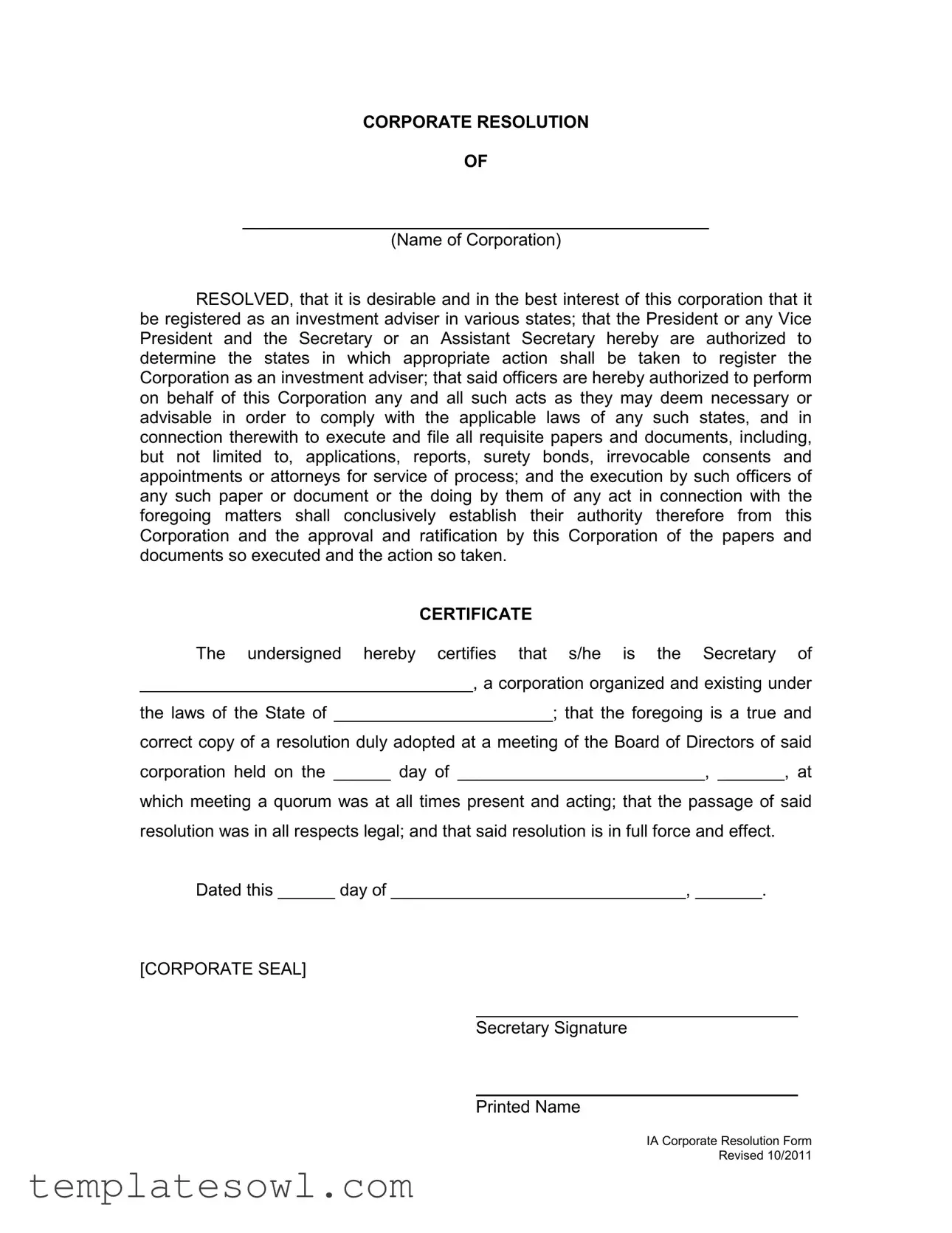CORPORATE RESOLUTION
OF
_________________________________________________
(Name of Corporation)
RESOLVED, that it is desirable and in the best interest of this corporation that it be registered as an investment adviser in various states; that the President or any Vice President and the Secretary or an Assistant Secretary hereby are authorized to determine the states in which appropriate action shall be taken to register the Corporation as an investment adviser; that said officers are hereby authorized to perform on behalf of this Corporation any and all such acts as they may deem necessary or advisable in order to comply with the applicable laws of any such states, and in connection therewith to execute and file all requisite papers and documents, including, but not limited to, applications, reports, surety bonds, irrevocable consents and appointments or attorneys for service of process; and the execution by such officers of any such paper or document or the doing by them of any act in connection with the foregoing matters shall conclusively establish their authority therefore from this Corporation and the approval and ratification by this Corporation of the papers and documents so executed and the action so taken.
CERTIFICATE
The undersigned hereby certifies that s/he is the Secretary of
___________________________________, a corporation organized and existing under
the laws of the State of _______________________; that the foregoing is a true and
correct copy of a resolution duly adopted at a meeting of the Board of Directors of said corporation held on the ______ day of __________________________, _______, at
which meeting a quorum was at all times present and acting; that the passage of said
resolution was in all respects legal; and that said resolution is in full force and effect.
Dated this ______ day of _______________________________, _______.
[CORPORATE SEAL]
Secretary Signature
Printed Name
IA Corporate Resolution Form
Revised 10/2011

